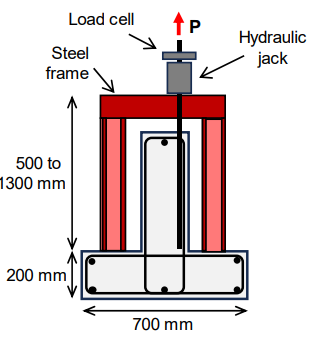Rafael Gonzalez, Mahmoud Elsayed, Alan Alonso, Carlos Cruz-Noguez, and Douglas Tomlinson
i PhD Candidate, University of Alberta, Edmonton, Canada, rgonzalez@ualberta.ca
ii PhD Candidate, University of Alberta, Edmonton, Canada, mhelsaye@ualberta.ca
iii Structural Engineer, RJC Engineers, Edmonton, Canada, aalonsorivers@rjc.ca
iv Professor, University of Alberta, Edmonton, Canada, carlos.cruznoguez@ualberta.ca
v Associate Professor, University of Alberta, Edmonton, Canada, dtomlins@ualberta.ca
ABSTRACT
Slender masonry walls are widely used in single-story commercial structures due to their efficiency and cost-effectiveness. However, increasing architectural demands for taller and thinner walls have amplified the vulnerability of these structures to buckling and second-order effects. Current design practices often rely on conservative approaches, such as increasing wall thickness, which raises material costs and compromises productivity. An alternative strategy—placing vertical reinforcement closer to the edge of the grouted cell—offers the potential to enhance out-of-plane performance but raises concerns about bond strength and durability. This paper presents the first phase of an experimental program aimed at evaluating the bond behaviour of vertical reinforcement placed at varying positions within masonry block cells. A total of ten pullout tests were conducted using a novel setup designed to replicate realistic conditions while eliminating compressive stresses on the surrounding masonry. Results demonstrated that current splice length provisions in CSA S304:24 are overly conservative, particularly for reinforcement located near the cell edge. Most tests resulted in steel yielding before bond failure, which indicates the need for reduced splice lengths in future specimens to ensure bond-dominated failure mechanisms. These findings show that more efficient design expressions that consider innovative reinforcement configurations without compromising the safety or structural integrity of walls are needed. By addressing key gaps in current standards and leveraging a scalable test setup, this work sets up for the next phase of research, which will expand the experimental database. These insights contribute to the development of more competitive and sustainable masonry construction practices.
KEYWORDS: bond, experimental test, lap splice, pullout test, reinforced masonry.
038-Gonzalez.pdf



